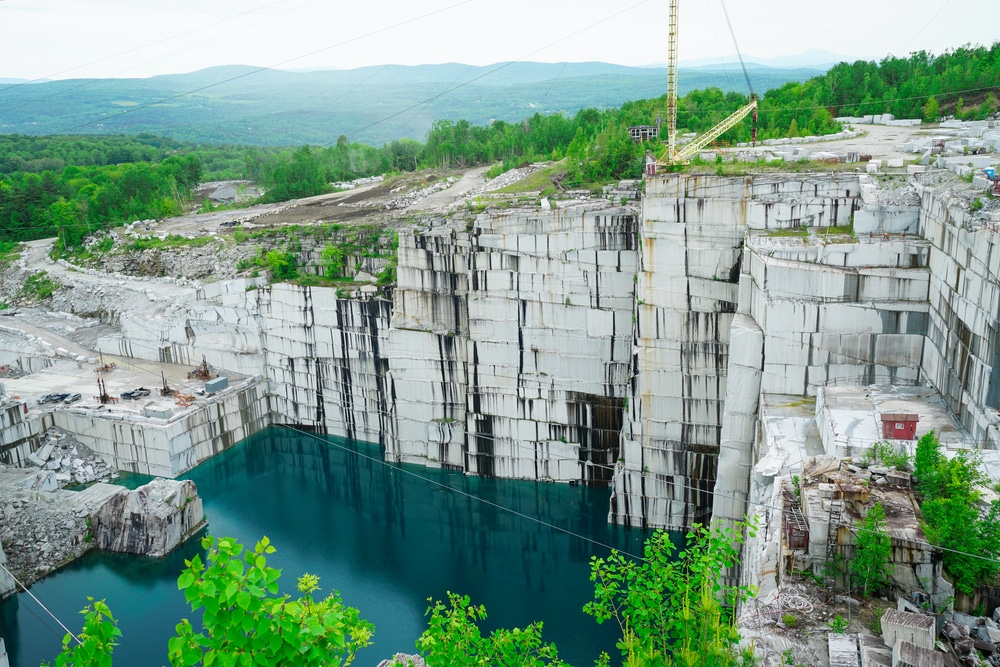Granite Quarries in South Africa Marvels: Checking Out the Quarry Landscape
Granite Quarries in South Africa Marvels: Checking Out the Quarry Landscape
Blog Article
Unearthing the Rich History and Sustainable Practices of Granite Quarrying
As we base on the precipice of revealing the intricate tapestry of granite quarrying, a journey through time exposes not just the physical act of removing stone however also the cultural and historic importance woven into the extremely textile of this practice. From the ancient beginnings that laid the structure for contemporary quarrying methods to the sustainable techniques that are shaping the future of this sector, each carve mark on granite surface areas informs a tale waiting to be uncovered (granite quarries in south africa). The heritage of granite quarrying stretches much beyond plain extraction; it is a testament to human ingenuity, strength, and the enduring attraction of this stunning rock
Old Origins of Granite Quarrying
Going back to ancient civilizations, the practice of quarrying granite has actually been an indispensable part of human history and building improvement. The earliest proof of granite quarrying go back to old Egypt, where substantial pyramids and detailed sculptures were crafted from this sturdy rock. The Egyptians utilized primitive tools to draw out granite blocks from quarries, showcasing the significance of this product in their significant constructions.
Relocating ahead in background, the Greeks also made significant payments to the quarrying of granite. The Greeks used granite in various building wonders, such as holy places and sculptures, showing their skill in shaping and sculpting this hardy rock. The Romans additionally improved the strategies of quarrying granite, employing sophisticated tools like knives and hammers to extract and shape granite for their iconic frameworks.
Via the centuries, the method of quarrying granite has advanced, with modern-day technologies enhancing efficiency while maintaining the classic allure of this natural stone - granite quarries in south africa. From ancient people to modern home builders, the heritage of granite quarrying remains to shape our world
Advancement of Quarrying Methods
The evolution of quarrying methods has been noted by a continual progression towards higher efficiency and accuracy in removing granite. Early quarrying methods included hand-operated labor with standard devices such as knives, hammers, and wedges to extract granite blocks from the planet.
In more current times, the arrival of equipment reinvented the quarrying market, enabling much faster removal prices and increased performance. Technologies such as diamond wire saws, high-pressure water jets, and pneumatic drills have become common in modern-day quarries, permitting exact cutting and decreased waste. Furthermore, advancements in computer-controlled tools and 3D modeling have actually maximized quarrying procedures, causing very little ecological influence and improved sustainability techniques. As the demand for granite continues to rise, the development of quarrying techniques stays integral to meeting industry needs successfully and sustainably.
Social Relevance of Granite
Granite holds an extensive social significance throughout different worlds due to its long-lasting presence in architectural work of arts and revered monoliths. The social value of granite prolongs beyond its physical attributes; it symbolizes strength, stability, and eternity, making it an icon of enduring legacies and customs.

Lasting Practices in Quarrying
Among the rich background of granite quarrying and its cultural value exists a growing emphasis on sustainable practices within the sector. As ecological understanding and worries about resource depletion have heightened globally, the quarrying market has progressively accepted sustainable methods to minimize its influence on the setting and surrounding neighborhoods.

Furthermore, improvement and rehab of quarry sites post-extraction are essential to lasting techniques. By restoring quarried locations to a natural or helpful state, such as developing wildlife habitats or leisure rooms, quarriers can counter the environmental footprint of their procedures and add positively to the regional ecosystem.
Tradition of Granite Quarrying
With a historical backdrop soaked in craftsmanship and commercial progression, what withstanding influence has granite quarrying left on the landscape of modern-day culture? The heritage of granite quarrying transcends simple extraction methods; it has shaped architectural wonders, urban landscapes, and social heritage worldwide. The resilient nature of granite has made it a favored choice for monoliths, structures, and framework, standing as a testament to the ability and creativity of quarry workers throughout generations.
Additionally, the economic impact of granite quarrying can not be neglected. The sector proceeds to supply employment possibility and drive local economies in regions where granite extraction is widespread. It has likewise stimulated technical improvements in quarrying methods and equipment, leading to much more effective and sustainable practices.
In terms of sustainability, the legacy of granite quarrying consists of initiatives to mitigate environmental effects via reclamation projects and accountable source administration. By stabilizing financial passions with ecological stewardship, the industry strives to make certain that future generations can remain to take advantage of hop over to here this enduring natural deposit.
Verdict

Report this page